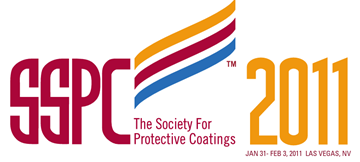Search
Products tagged with 'Standard Practices'
View as
Sort by
Display
per page
SSPC-SP 5/NACE No. 1-2006, White Metal Blast Cleaning
Product Number:
21065-SG
ISBN:
1-57590-107-2
Publication Date:
2006
$109.00
SSPC-SP 6 (WAB)/NACE WAB-3-2015, “Commercial Wet Abrasive Blast Cleaning”
Product Number:
21199-SG
ISBN:
1-57590-324-5
Publication Date:
2015
$109.00
SSPC-SP 7 (WAB)/NACE WAB-4-2015, “Brush-Off Wet Abrasive Blast Cleaning”
Product Number:
21401-SG
ISBN:
1-57590-326-1
Publication Date:
2015
$109.00
SSPC-SP 7/NACE No. 4-2006, Brush-Off Blast Cleaning
Product Number:
21068-SG
ISBN:
1-57590-102-1
Publication Date:
2006
$109.00
Standardized Coating Systems for Commercial Applications
Product Number:
41211-603-SG
Publication Date:
2011
$20.00
Standards, Training and Certification in the Oil and Gas Industry
Product Number:
51216-014-SG
Publication Date:
2016
$20.00
Standards, Training and Certifications in the Marine Coatings Industry
Product Number:
41216-948-SG
Publication Date:
2016
$20.00
The Use of Caoting Thickness Gauges for the Measurement of AntiCorrosion Coatings on Structural Steel
Product Number:
41206-242-SG
Publication Date:
2006
$20.00
The Use of Personal Protective Equipment and Regulations & Standards Affecting Safe Abrasive Blasting
Product Number:
41211-601-SG
Publication Date:
2011
$20.00
TM0115-2015, “Cathodic Disbondment Test for Coated Steel Structures under Cathodic Protection”
Product Number:
21269-SG
Publication Date:
2015
$179.00
TM0169-HD1994 Laboratory Corrosion Testing of Metals for the Process Industries
Product Number:
21200-HD1994
Publication Date:
1994
$179.00
UHP Water-Jetting and Surface-Tolerante Coatings in New Building Applications
Product Number:
51217-035-SG
Publication Date:
2017
$20.00












